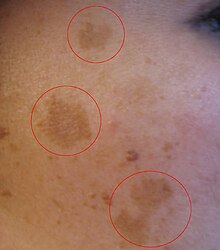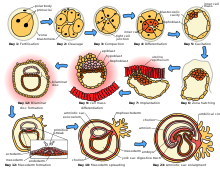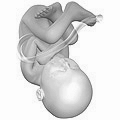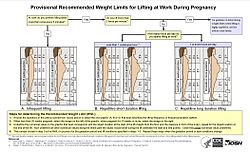Let’s Go Coco-Nuts!
Coconut water has gained a sudden splurge of popularity thanks to its long list of health and beauty benefits. Its journey went from from being an exotic drink known just for thirst quenching and quick hydration to a popular health drink with a wide range of beauty benefits.
Coconut water is the clear juice found inside young green coconuts. Not to be confused with coconut milk: it is fat-free and low in calories.
Coconut water has been around for ages and is a natural source of essential minerals, vitamins and electrolytes like sodium and potassium.
Some interesting nutritional facts about coconut water:
Here Are 7 Beauty Benefits Of Drinking Coconut Water:
1. ANTI-AGING
Coconut water contains anti-microbial powerhouse called lauric acid that helps protect against skin infections. It also contains protein called cytokines that is responsible for encouraging cell growth and cell activation.
They regulate signals in response to inflammation caused by acne and also have an anti-ageing effect on the skin. Both external and internal use can improve wrinkles, fine lines and dark spots.
2. FIGHTS ACNE
Coconut water is a natural way to get rid of those acne and blemishes. Topical application of coconut water all over the skin helps lighten blemishes and healing acne.
Coconut water has anti-microbial and anti-fungal properties that reduces the risk of acne causing microbial infection and helps in getting a clear and flawless skin.
3. NATURAL CLEANSER & TONER
It works as a hydrating cleanser for sensitive skin. Dab some cotton in coconut water and use it for removing makeup.
Now take another cotton ball dipped in coconut water and gently move your hand in small circles all over your face.
The natural toner reduces the appearance of pores and naturally moisturizes your skin. It also helps in regulating the pH of the skin and keeps it well hydrated without excess oil.
4. PROTECTS AGAINST SUN DAMAGE
The anti-oxidant properties of coconut water along with its high levels of Vitamin C helps in reducing sunburn. Gently apply coconut water directly on skin, let the skin soak it and work its magic for the next 20-30 minutes, rinse your face with cold water and feel the difference. This is the simplest sunburn removal pack without harmful chemicals that even removes patchiness.
5. TAME FRIZZY HAIR
Unruly and frizzy hair can get a healthy boost by massaging with coconut water. Coconut oil can be a little heavy, but coconut water is light and works as a hydration serum for dry unmanageable hair. It makes your hair smooth, shiny and stronger.
6. REDUCES HAIR FALL
Coconut water is rich in Vitamin K and Iron. Vitamin K is essential to promote healthy hair growth and stop hair fall.
Similarly Iron carries the oxygen to the roots making them stronger and reducing hair fall. Just massage your hair with coconut water and leave it in for stronger hair.
7. HELPS TREAT DANDRUFF & DRY SCALP
Coconut water works as a deep moisturizer and hydrates dry scalp to effectively treat dandruff. It is anti-fungal in nature, helping you to get rid of dandruff.
Lauric acid present in coconut water also helps in improving the hair strength and thus reduce hair loss.
Coconut is being increasingly used in beauty and hair products and for a good reason. It is natural, risk-free and easy to find. So no need to buy expensive beauty products, rather try drinking and applying coconut water to treat beauty and hair problems.
Coconut water is generally considered safe and has no serious known side effects. But if you are pregnant or nursing, taking medications for blood pressure, allergic to tree nuts or on a low sodium diet, talk you your healthcare professional first.
We’re curious to find out what’s your experience with coconut water! Share your own beauty hacks & tell us some more about how to use them.
She put the lime in the coconut, she called the doctor, woke him up
And said, Doctor, ain’t there nothin’ I can take
I say, doctor, to relieve this bellyache?’
They are from a very popular 70s hit ‘Coconut’ by Harry Nilsson. Yes, he made a full 4 minutes 32-second peppy song talking about coconuts. And why not? The elixir from the tropics, coconut water, has been a favorite natural drink since time immemorial, sometimes being a life saver too (I’ll discuss that later).
An alternative to aerated beverages and sports drinks, coconut water, is low in calories, and delicious to boot! But, did you know that your favorite drink has some surprising benefits to offer?
Do I see your interests piquing? Good. Because I’ve got a lot to share.
Come, hop on the wagon.
Coconut Water- A Brief
Scientific Name- Cocos nucifera
Family- Arecaceae
Origin- South East Asia
Other Names- Nariyal Pani (Hindi), Kobbari Bondam Neeru (Telugu), Tenkay Tannir (Tamil), Karikkin Vellam (Malayalam), YeLeneeru (Kannada), and Narikelera Pani (Bengali)
Family- Arecaceae
Origin- South East Asia
Other Names- Nariyal Pani (Hindi), Kobbari Bondam Neeru (Telugu), Tenkay Tannir (Tamil), Karikkin Vellam (Malayalam), YeLeneeru (Kannada), and Narikelera Pani (Bengali)
Before we begin with the never-ending tale of coconut water benefits, let’s take a quick look at the biological aspects of this fruit. Ready?
Vasco da Gama gave the coconut its name. The inhabitants called it ‘Coco,’ named after a scowling face or hobgoblin (the scary coconut’s ‘eyes,’ remember?). When this ‘coco’ arrived in England, the suffix ‘nut’ was added making it a ‘coconut.’ Interesting, right?
But, coconut is not a ‘nut’ as many of us presume. It is actually a stone fruit found on the palm trees that grow well in the coastal tropical environments. This tree usually yields several hundreds of tender fruits every season, depending upon the species and the area.
Coconut ‘water’ is actually the juice present inside the endosperm (interior cavity) of the young (about 5-7 months old) and tender coconut. This clear liquid is sweet and sterile and contains various essential
compounds such as vitamins, minerals, sugars, electrolytes, amino acids, phytohormones, and cytokine.
Each tender coconut may contain around 200 to 1000 ml of water, depending on the size and species. Any fruit that is younger than five months of age will be bitter and without any nutrients. On the other hand, mature coconuts have less water because their endosperm is thick with a white edible kernel.
Let’s quickly move on to the interesting part without wasting any more time, shall we?
How Can Coconut Water Help You
Health Benefits
Skin Benefits
Hair Benefits
Frequently Asked Questions (FAQs)
Health Benefits Of Coconut Water
Did you know that coconut water was able to save many lives during the World War II?
You might take this as a far-fetched idea, but there are more than one documented cases that prove coconut water’s importance as an emergency intravenous fluid during the 40s and 50s.
The list has just begun. There are many health benefits of coconut water that you will be surprised to know, just like the one above. So, stay tuned.
1. Promotes Cardiovascular Health
For a healthy heart, you need to eat nutritious food and exercise regularly. And now, you can add drinking coconut water to the list.
Studies have shown that coconut water can reduce the risk of heart attacks, lower blood pressure, and hypertension
(1).
Tender coconut water, preferably fresh, can be had once a day to improve cardiovascular health.
Caution—Coconut water might be low in calories, but the yield from one coconut can contain about five grams of sugar. Therefore, drinking too much coconut water is not recommended.
2. Improves Metabolism
You probably know that improved metabolism means that you end up burning more calories. While there might be many things slugging your metabolism, coconut water isn’t one of them. In fact, it can give your metabolism quite the boost.
One of the crucial things required for the proper metabolism of carbohydrates and fats into energy is manganese
(2). This is why coconut water, a good source of manganese, helps improve metabolism
3. Prevents Kidney Stones
Prevention of kidney stones is one of the most effective health benefits of coconut water. Kidney stones can cause a lot of pain and may result in serious health issues. Drinking coconut water can help in preventing them.
Kidney stones occur when there is an accumulation of crystals in your kidneys that should have been flushed out through urine. Research has shown that coconut water reduces the amount of crystals deposited in the kidneys, which significantly r
4. Aids Digestion
It is common knowledge that ingesting fibers is essential for your digestive system to function properly. Coconut water is rich in fiber, which is why it helps with your digestive system.
The water a single coconut yield contains about 9% of the amount of fiber that is required by your body in a single day
educes the occurrence of kidney stones.
5. Prevents And Treats Dehydration
Dehydration occurs when the water content in your body drops. It is usually a result of not drinking enough water or losing water through excretion. Coconut water keeps you hydrated, which is why a lot of athletes use it as a post-workout drink.
When you are dehydrated, you don’t just lose water; you lose essential salts and nutrients as well. Coconut water, which has high water content and is rich in nutrients, helps replenish your body '
. Helps With Muscle Cramps
Muscle cramps can happen due to many reasons, and coconut water helps ease the discomfort.
According to studies, potassium deficiency can result in muscle spasms. A diet rich in potassium ensures that your muscles stay in perfect order .
Excessive exercising can also cause muscle cramps, which can be eased by the consumption of electrolytes. Coconut water, which replenishes lost water and potassium, can be a perfect substitute for any energy drink.
7. Strengthens Bones
Although our bones are made up mostly of calcium, we need some nutrients to maintain bone strength and density.
There have been several studies about the impact of coconut water on bones. The results have been favorable . Coconut water contains a significant amount of calcium that is necessary for healthy bones. It also has magnesium that builds bone strength
8. Reduces Bloating
Bloating is usually gas-related. But it can also be caused due to high sodium intake, which coconut water can reduce.
Coconut contains a high amount of potassium, which helps counteract the effects of sodium.
9. Aids Weight Loss
Weight loss is one of the most amazing benefits of drinking coconut water. Consuming empty calories is one the main reasons you tend to put on weight. Aerated drinks and other sugary drinks can make you pile on calories and leave you feeling hungry. If you are seeking an alternative, coconut water is an excellent substitute.
Coconut water is a good source of dietary fiber . Fiber does not get digested by your body, so it stays in your system longer and keeps you feeling full. This is why you rarely feel hungry, and eat less.
10. Helps With Diabetes
Wondering if people with diabetes can have this sweet and delicious drink? Research says yes!
Certain studies have concluded that the water from mature coconuts can have an anti diabetic effect . People with diabetes are very susceptible to excessive blood clotting, which puts them at risk. Not only does coconut water help reduce blood sugar, but it also prevents the occurrence of blood clots.
Caution—With the intake of coconut water, diabetics should monitor their blood sugar for signs of hypoglycemia.
11. Lowers Blood Pressure
Coconut water has a direct effect on blood pressure. Studies have shown that it can help in lowering blood pressure and hypertension. It also reduces cholesterol and prevents blood clots.
Coconut water exhibits anti thrombotic effects, which means it helps prevent blood clots. It also reduces cholesterol, which can have an enormous impact on your blood pressure by clogging up your arteries.
12. Treats Diarrhea
Coconut water is a must-have liquid for those suffering from diarrhea. It will prevent the need for hospitalization by replacing the fluid loss from the GI (Gastrointestinal) tract
Interestingly, this humble liquid has a higher osmolarity than that of the WHO recommended ORS solution due to the presence of essential chemical compounds such as amino acids, minerals, enzymes, and fatty acids. Being very low in sodium and chlorides, but high in sugars and amino acids also makes coconut water a well-balanced fluid replacement for diarrhea.
13. As An Electrolyte Replacement
Coconut water is also a workable short-term replacement for human blood plasma 100 ml of coconut water contains about 250 mg of potassium and 105 mg of sodium that help replenish electrolyte deficiency in the patient’s body.
This is the sole reason why coconut water was popular during the World War II.
14. As A Detoxifier
We all know that detoxification is an important process for the proper functioning of our body. This process helps flush out harmful components from our organs, making us healthy from inside out.
But did you know that dehydration is also a significant contributor to the build-up toxins in our body?
Yes, it is, because inadequate hydration leads to hampered functioning of kidneys and livers, the detoxifying organs, thus giving way to the accumulation of toxins in the body.
What can we do about it?
The solution is all clear, my dear. Stay hydrated. And what can be a better hydration alternative than our precious coconut water?
Our body is capable of cleansing and detoxing on its own, provided it has all the essential nutrients and hydration, and coconut water contains every required nutrient including potassium and sodium.
15. Beneficial After A Prolonged Workout Session
Replace your energy drinks with coconut to stay hydrated even after a long work-out session.
Coconut water is rich in essential potassium, sodium, magnesium, and calcium which helps natural replenishment of lost electrolytes in the body. Also, they assist in maintaining proper fluid balance.
16. Balances pH Levels
Many toxins and chemical compounds present in the environment and foods make your body pH levels highly acidic which can eventually lead to joint pain, chemical sensitivity, heartburn, weight gain, diabetes, and immune deficiency.
This is where coconut water comes into play.
Coconut water has an amazing alkalizing effect which helps restore a healthy pH in the body. So, next time you face a disturbing acidity and heartburn, don’t think before sipping on this tasty drink.
17. Provides Instant Energy
Are you still relying on that bottled energy drink after a sunny day? Don’t. Because now you have a better reason to switch to coconut water instead.
A glass of fresh coconut water contains about 5 mg of natural sugar that has better energy-boosting effects than that of energy drinks, at a much lower price . The same glass is also rich in about 294 mg of potassium, which is essential for energy production in the cells.
18. Cures Hangovers
Consume coconut water next time you go overboard with the alcohol.
Having coconut water helps settle your stomach, reducing frequent urination and the urge to puke. It also helps provide the much-required hydration and nutrients that are lost courtesy alcohol.
Also, the antioxidants present in this revitalizing drink fight oxidative stress that occurs due to too much alcohol in our system (
Make your hangover drink by using coconut water, ripe mangoes, lemon juice and mint. Here’s how:
What You Need
What You Need To Do
Make a smoothie by blending all the ingredients and have it fresh to get rid of that annoying hangover.
*********************************************************************************************































